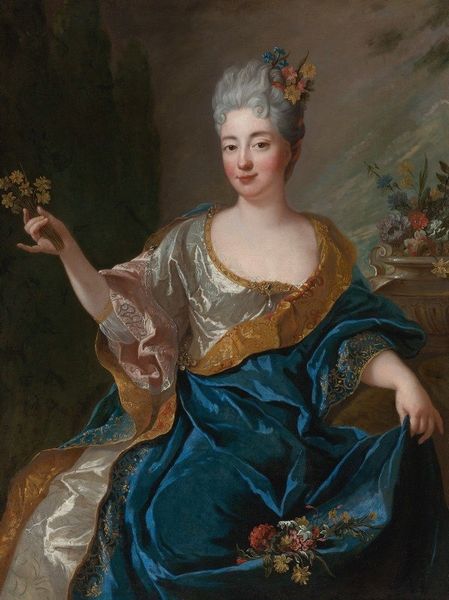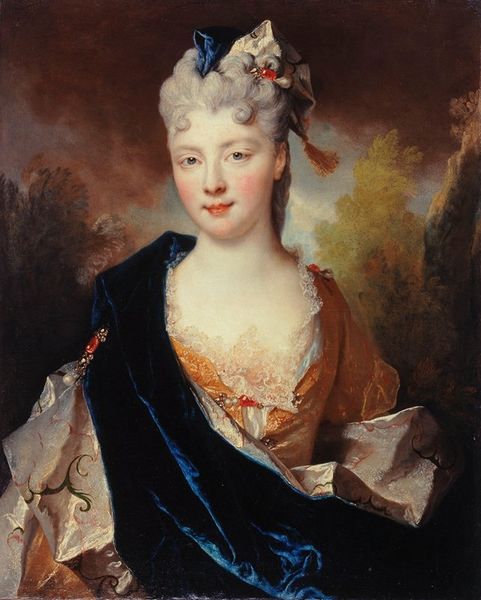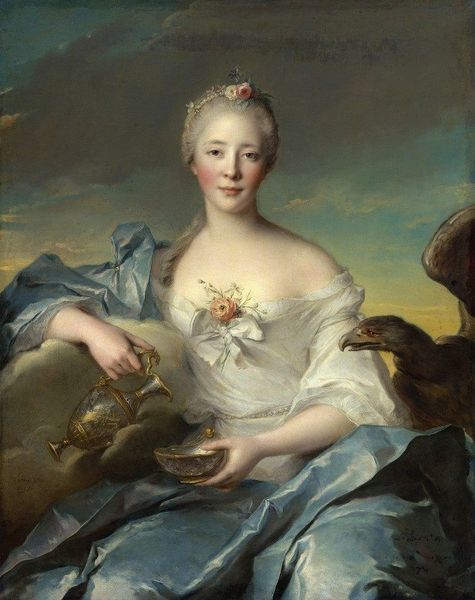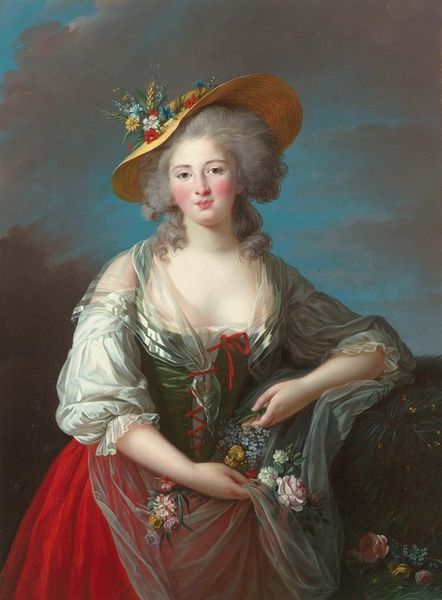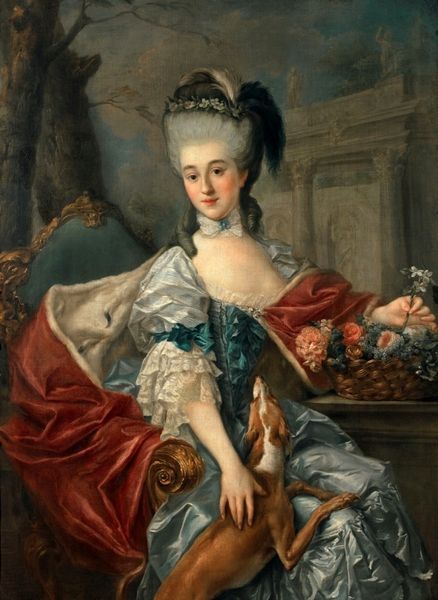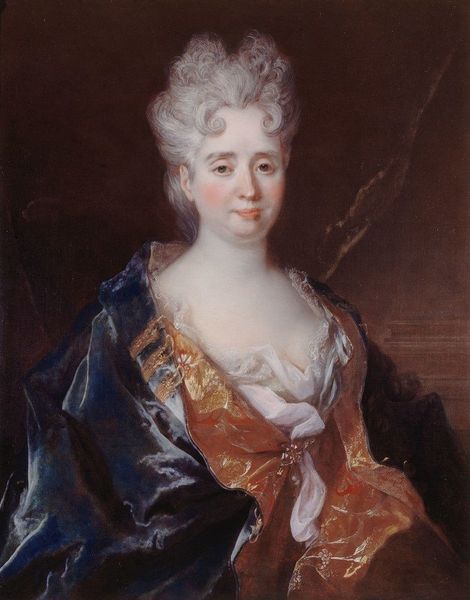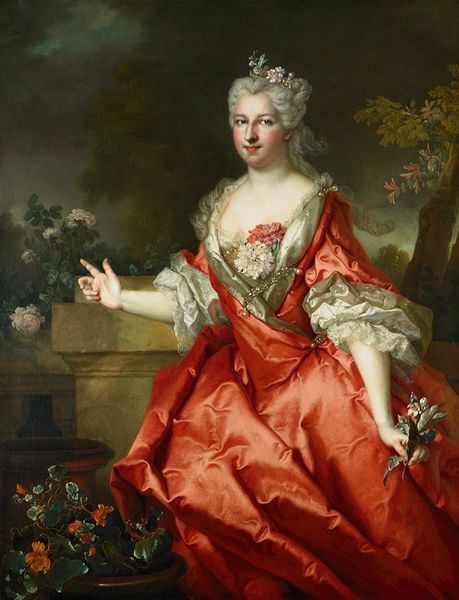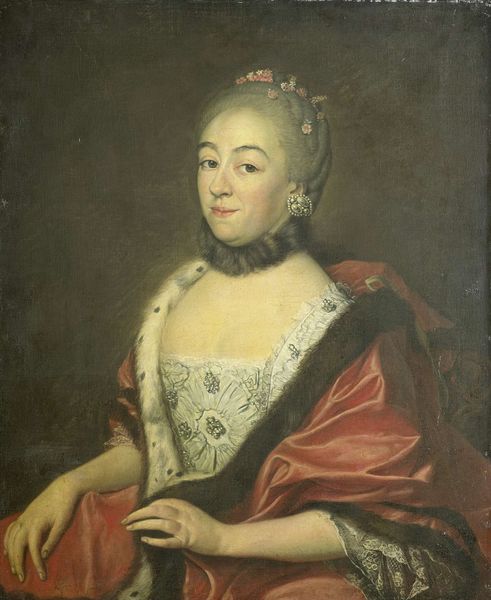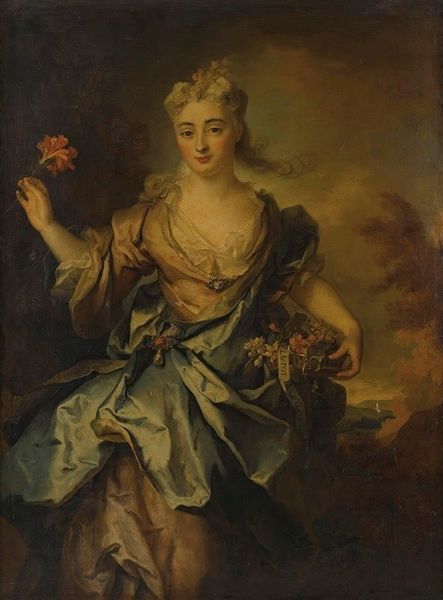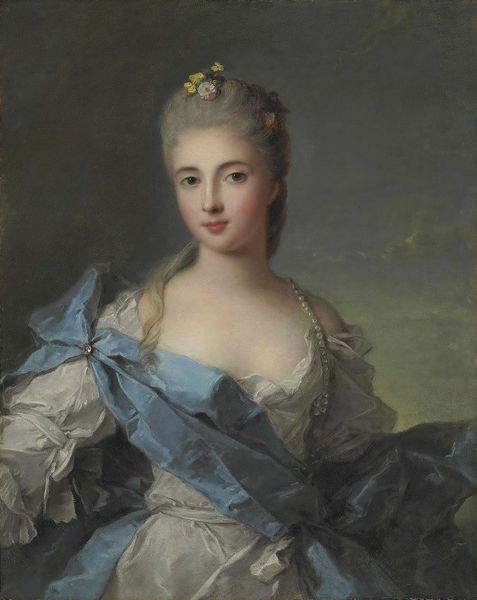
painting, oil-paint
#
portrait
#
baroque
#
painting
#
oil-paint
#
oil painting
#
genre-painting
#
portrait art
Copyright: Public domain
Curator: Standing before us is "Lady Mary Josephine Drummond, Gräfin von Castelblanco," a portrait created in 1708 by Jean-Baptiste Oudry. He masterfully employed oil paints to depict this noblewoman in a manner characteristic of the Baroque style. Editor: The lady projects a calm, almost ethereal presence, doesn’t she? The cool color palette seems to be a common trait among Baroque portraits and serves as an aristocratic stamp, but the hint of blush pink on her dress lends a somewhat more personable quality to her appearance. Curator: Oudry's depiction provides fascinating insights into the socio-political context of portraiture at the time. Commissioned works like this reinforced power structures by celebrating aristocratic status. Lady Mary, with her elaborate dress and the coat of arms beside her, visually embodies her lineage and social standing. How does this imagery operate within contemporary understandings of power and representation? Editor: Considering contemporary values, particularly our growing consciousness about inequity, the painting can initiate vital dialogues regarding representation, identity, and historical power dynamics. Note her gentle hand upon the small dog beside her — I see that act not only as the affection she holds for the animal, but the ownership and power over living things common among nobles. The gaze is poised yet distant, as if aware of a performance on display. Curator: Precisely! That performance extends to every detail. The elaborate dress becomes an armour in its own right, a visual demonstration of both wealth and constructed identity. Consider the implications for women's self-expression within a society where their image was carefully regulated by external forces, as well as wealth, title and marital position. Editor: These painted visages become particularly complex. I consider their continuing influence. By decoding these portraits, might we be empowered to disrupt some contemporary patterns of visual language and social narrative, I wonder? Curator: Indeed. This analysis offers essential perspectives for a more comprehensive view. By looking at art and its influence in historical, cultural, and theoretical terms, we build new opportunities for inclusive understandings of art in today's complex world. Editor: Ultimately, this encounter prompts necessary contemplation.
Comments
No comments
Be the first to comment and join the conversation on the ultimate creative platform.
